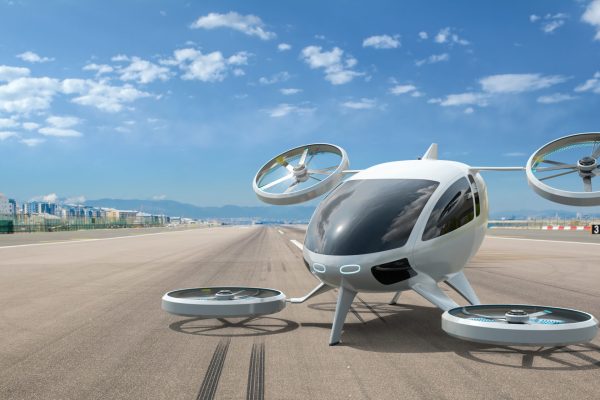Blogs
Transportation with Flying Cars
Unraveling the Future of Urban Air Mobility: Transforming Transportation with Flying Cars

As cities continue to grapple with congestion and pollution, urban planners are exploring innovative solutions to revolutionize transportation. One such solution gaining traction is urban air mobility (UAM), which promises to transform the way people move within cities. In this blog, we delve into the concept of UAM and explore how flying cars are poised to revolutionize urban transportation.
The Concept of Urban Air Mobility:
Urban air mobility refers to the use of electric vertical takeoff and landing (eVTOL) aircraft, commonly known as flying cars, to transport passengers and cargo within urban areas. These futuristic vehicles combine the convenience of helicopters with the efficiency and sustainability of electric propulsion systems, offering a new mode of transportation for city dwellers.
Advancements in Technology:
Recent advancements in battery technology, electric propulsion, and autonomous flight systems have made the concept of flying cars increasingly feasible. Electric motors provide clean, quiet, and efficient propulsion, while advanced sensors and artificial intelligence enable autonomous or semi-autonomous flight operations. Additionally, advancements in lightweight materials and aerodynamics contribute to the efficiency and safety of eVTOL aircraft.
Benefits of Urban Air Mobility:
Urban air mobility offers numerous benefits for cities and commuters alike. By taking to the skies, flying cars can bypass traffic congestion, reducing travel times and improving mobility within urban areas. This not only enhances productivity but also reduces stress and frustration associated with traditional ground transportation. Moreover, flying cars produce zero emissions during operation, contributing to cleaner air and reduced environmental impact in densely populated urban areas.
Applications and Use Cases:
The potential applications of urban air mobility are diverse and far-reaching. Flying cars could be used for daily commutes, providing a fast and efficient alternative to congested roadways. They could also be deployed for emergency medical transport, delivering life-saving medical supplies and personnel to remote or inaccessible locations. Additionally, flying cars could revolutionize logistics and delivery services, enabling rapid and efficient transportation of goods within urban areas.
Challenges and Considerations:
While the promise of urban air mobility is enticing, several challenges and considerations must be addressed to realize its full potential. These include regulatory approval, infrastructure development, safety and certification standards, and public acceptance. Regulatory agencies will need to establish guidelines and regulations for eVTOL operations to ensure safety and integration into existing airspace. Additionally, cities will need to invest in infrastructure such as vertiports and charging stations to support the deployment of flying cars.
Conclusion:
In conclusion, urban air mobility has the potential to revolutionize transportation in cities, offering a fast, efficient, and sustainable alternative to traditional ground transportation. With advancements in technology and growing interest from industry stakeholders, the era of flying cars is rapidly approaching. As we unravel the future of urban air mobility, we envision a world where cities are seamlessly connected, congestion is minimized, and transportation is as simple as taking to the skies.
